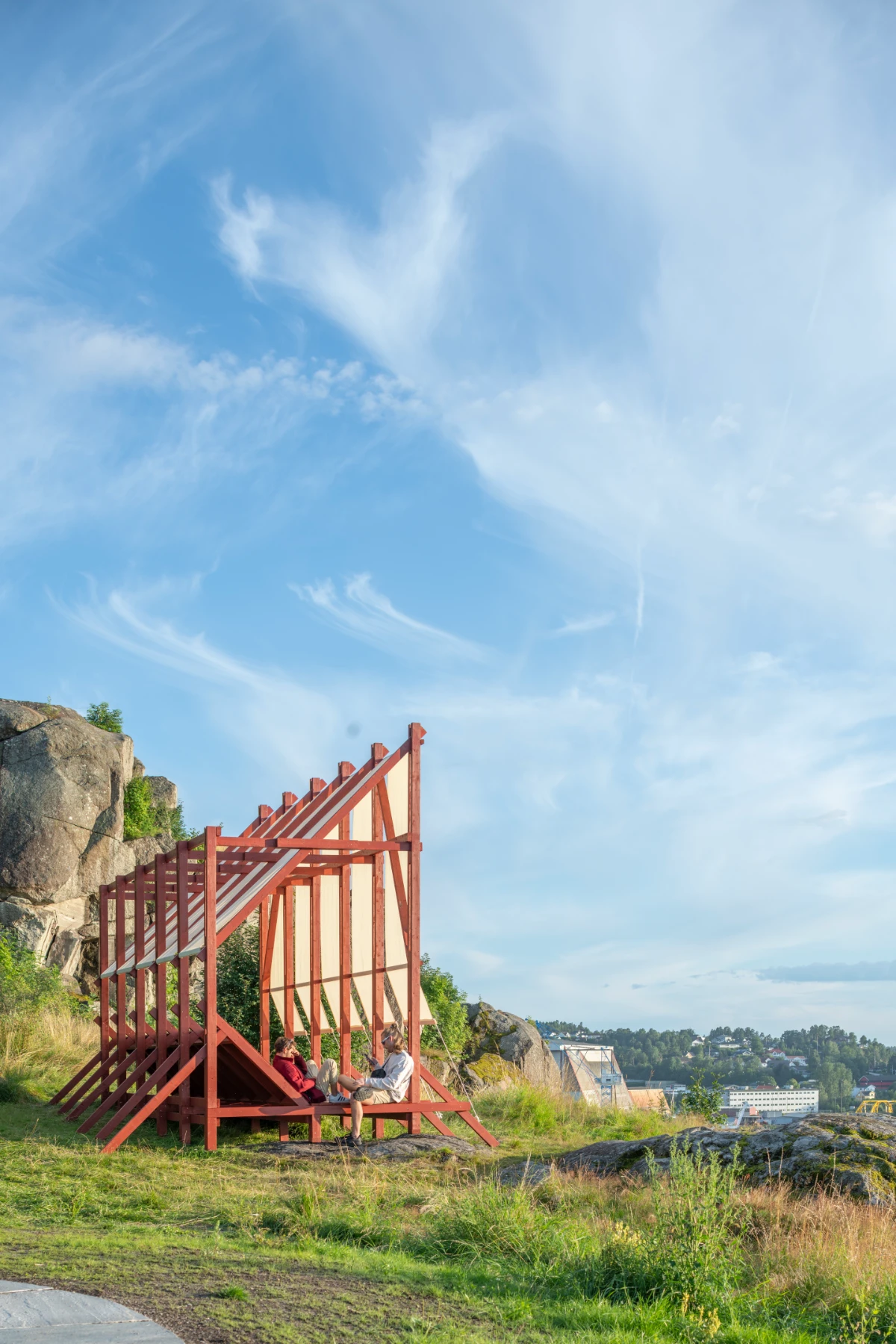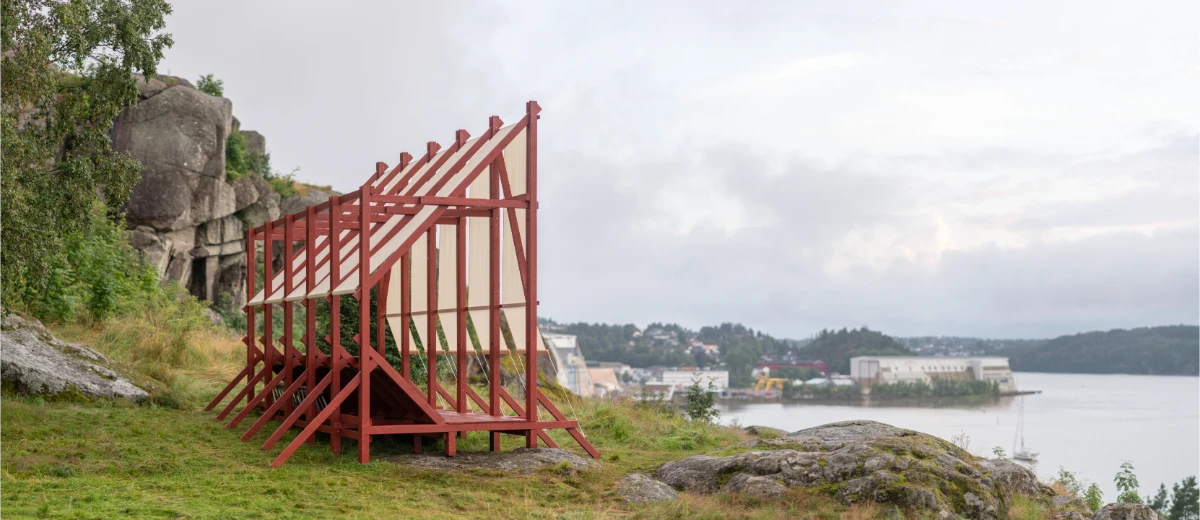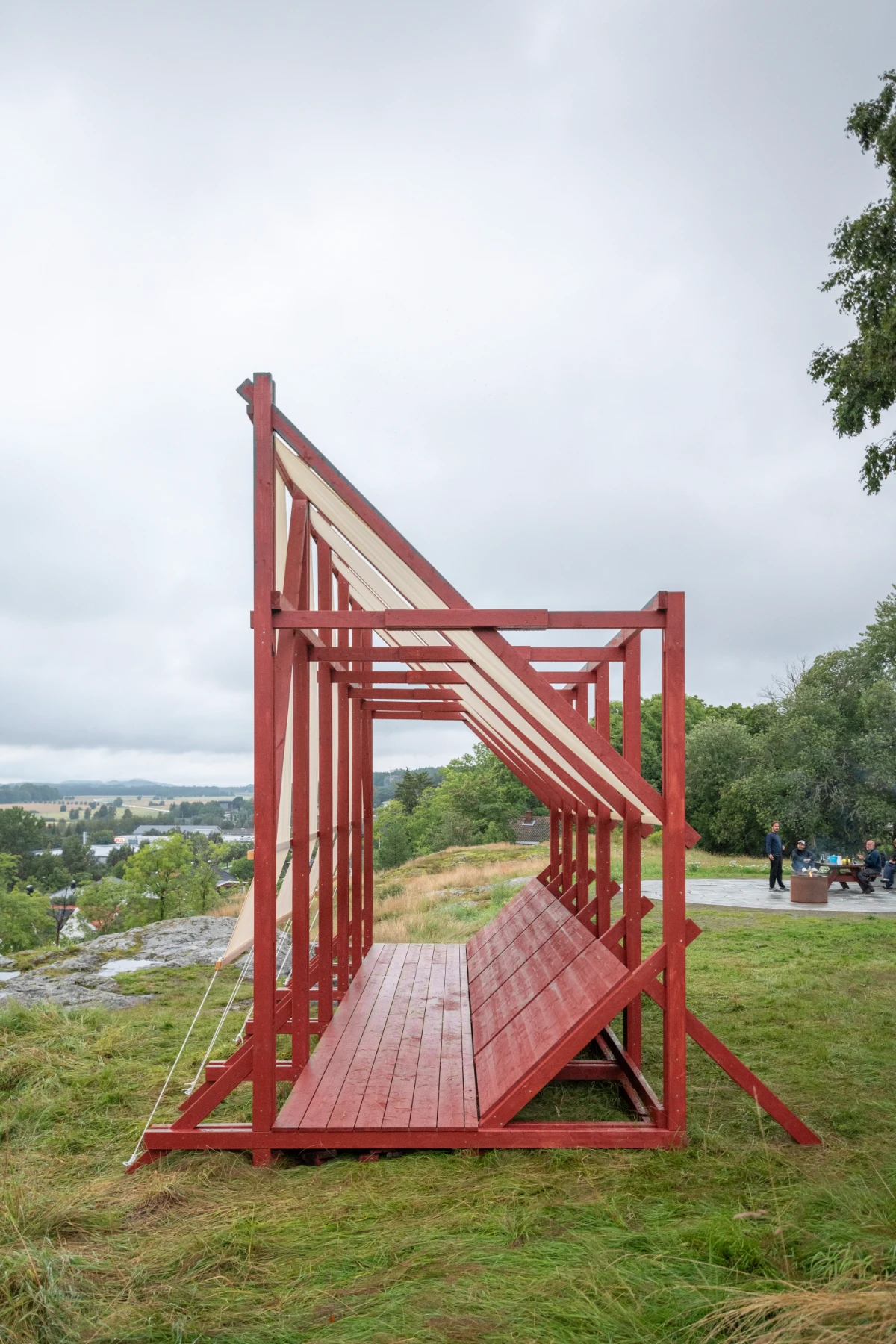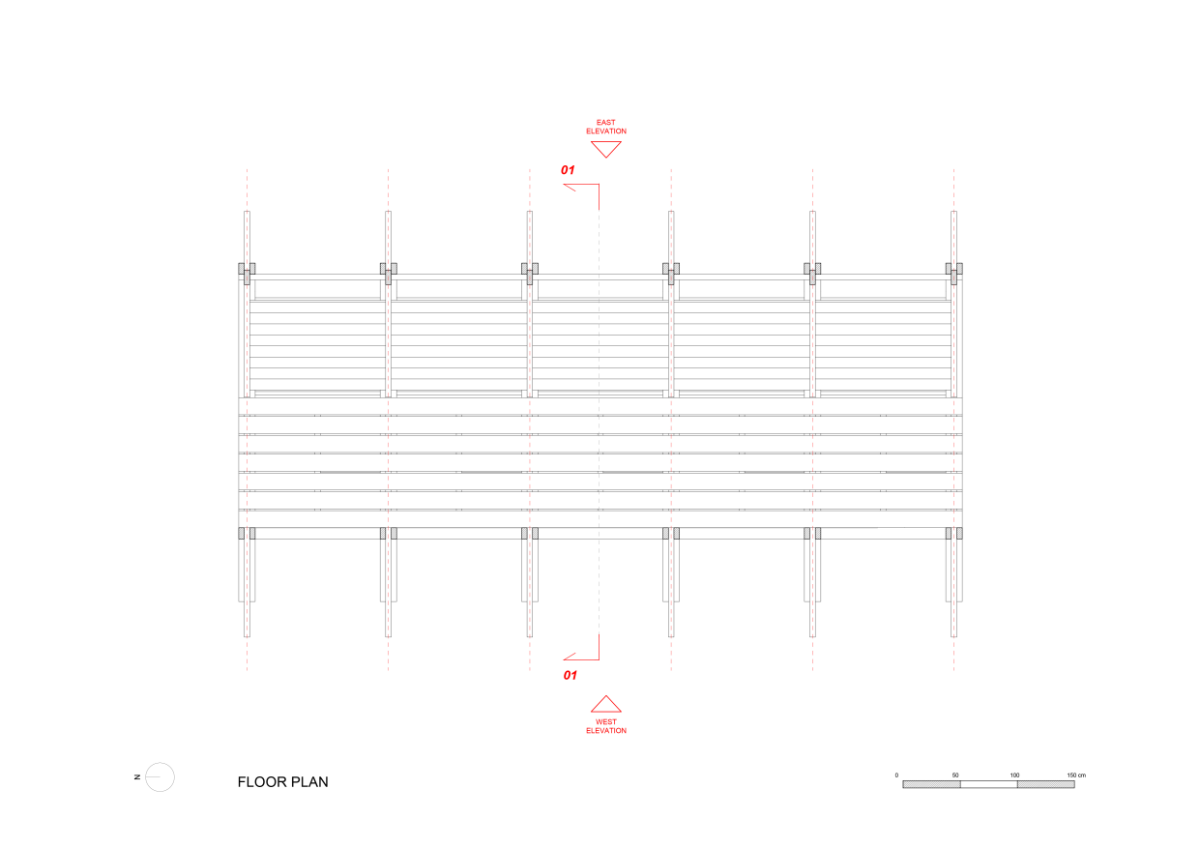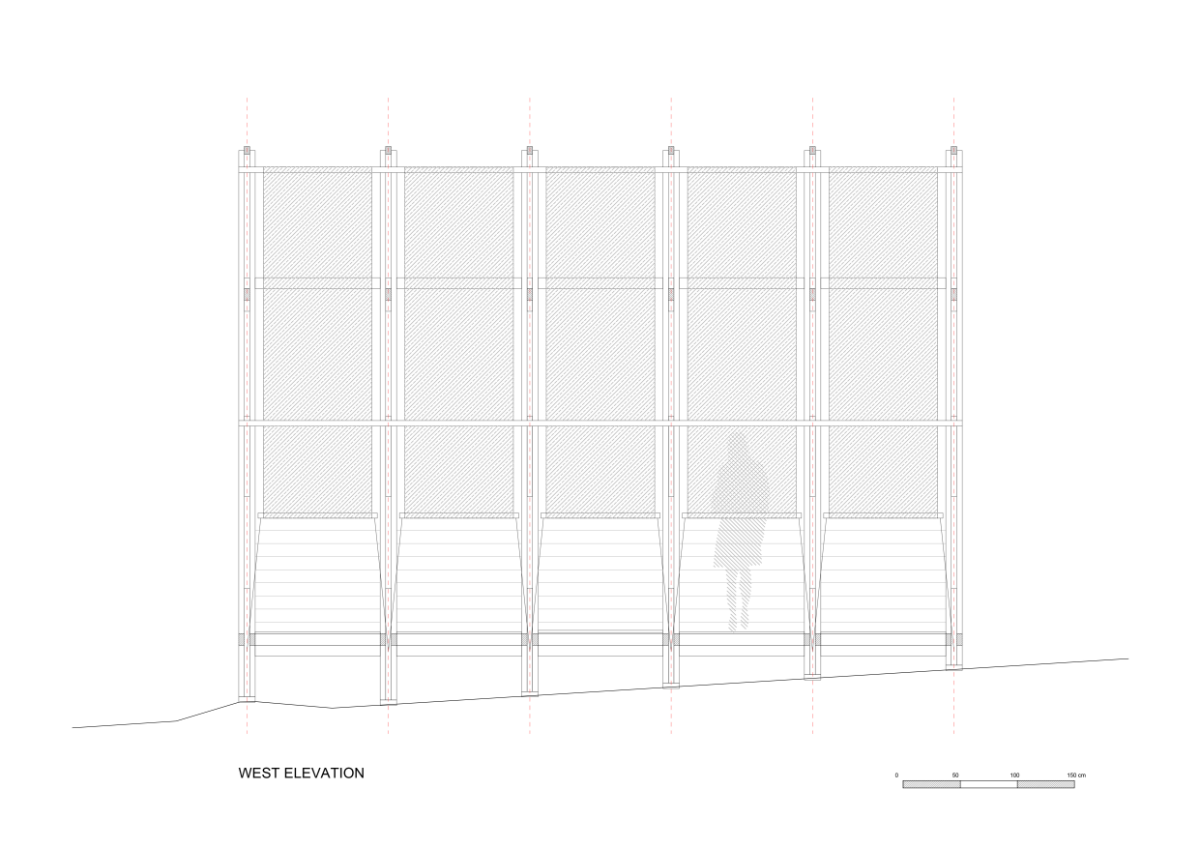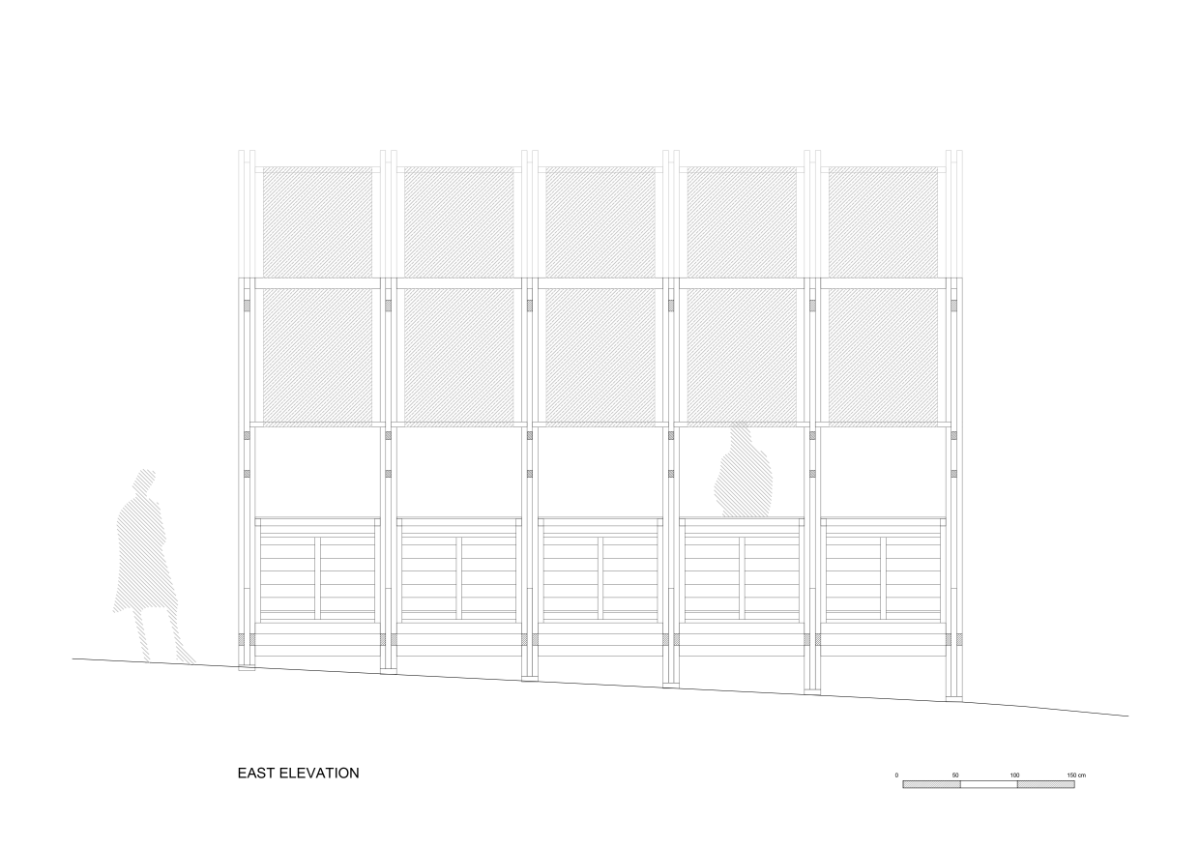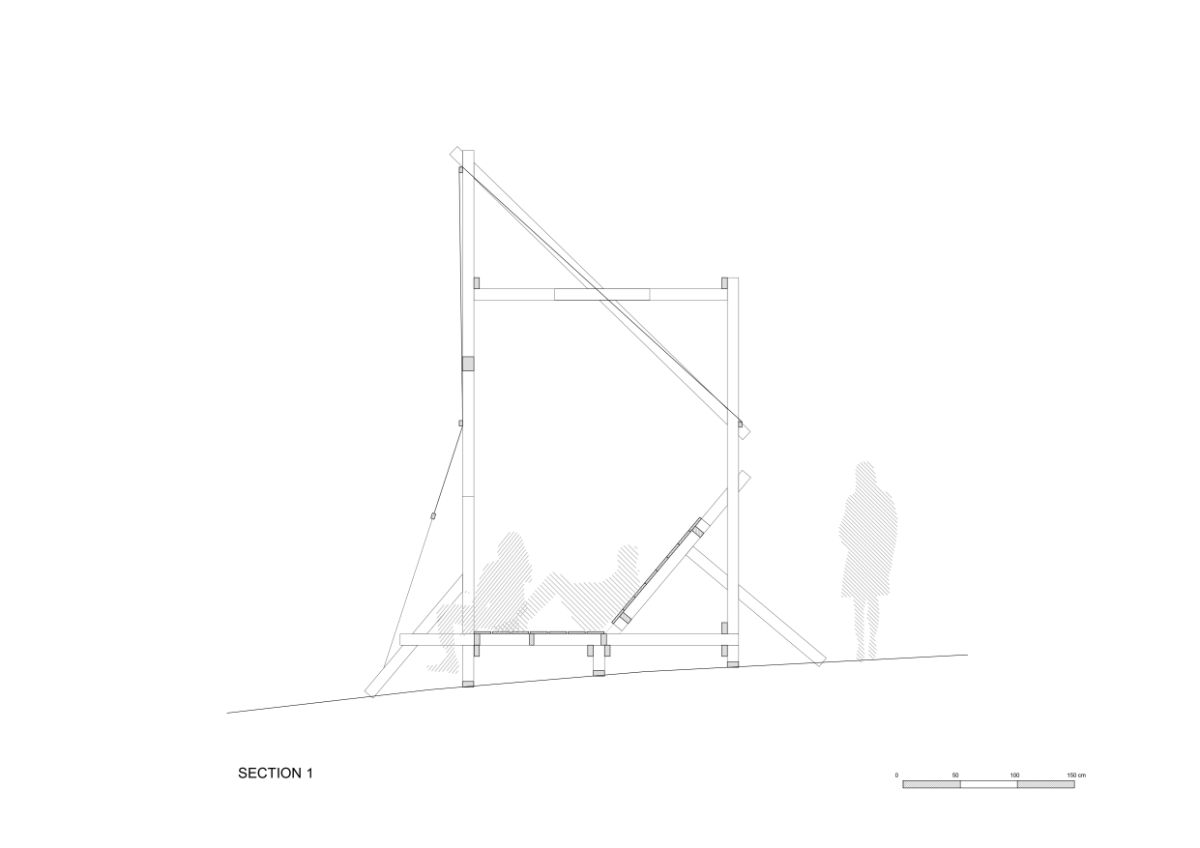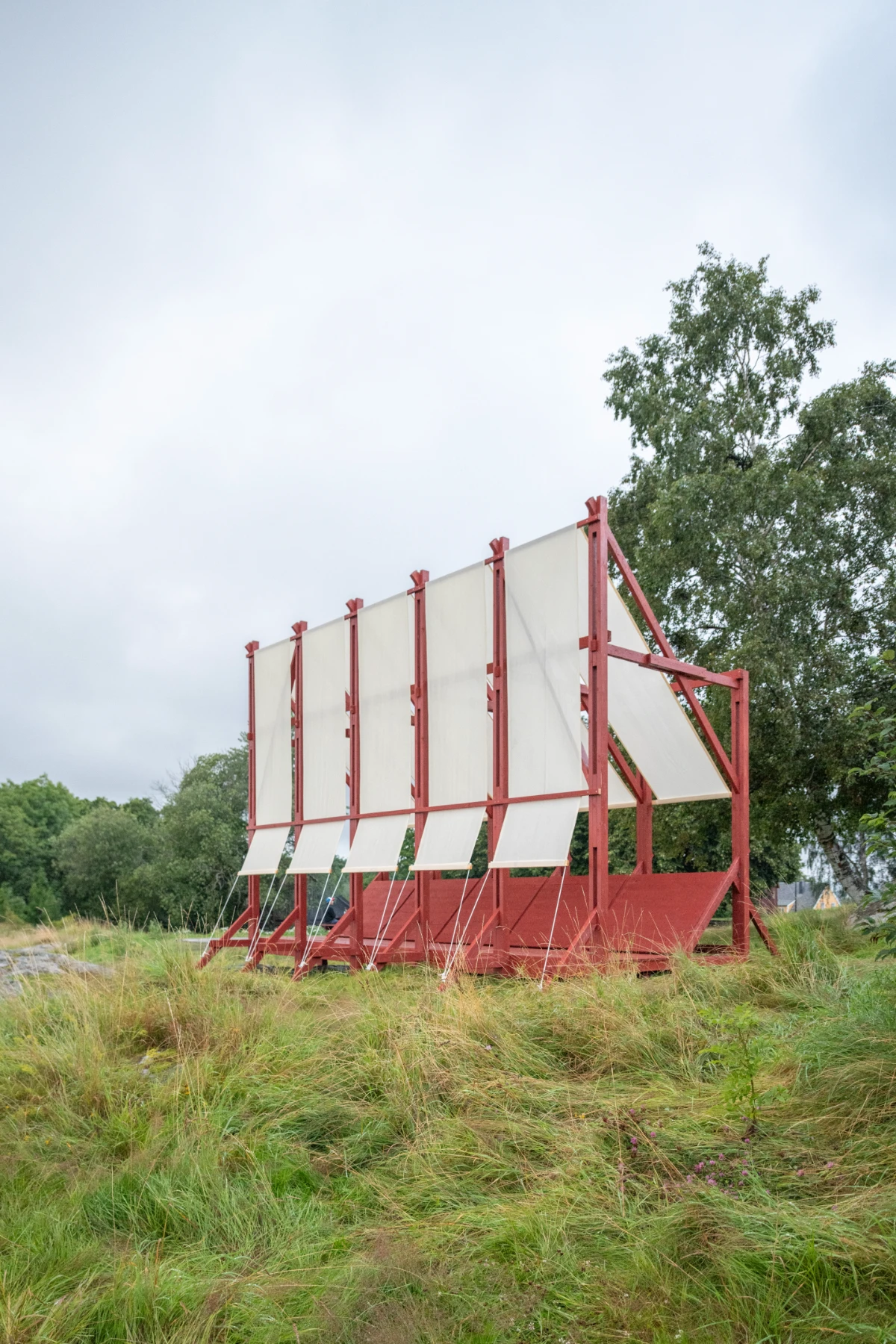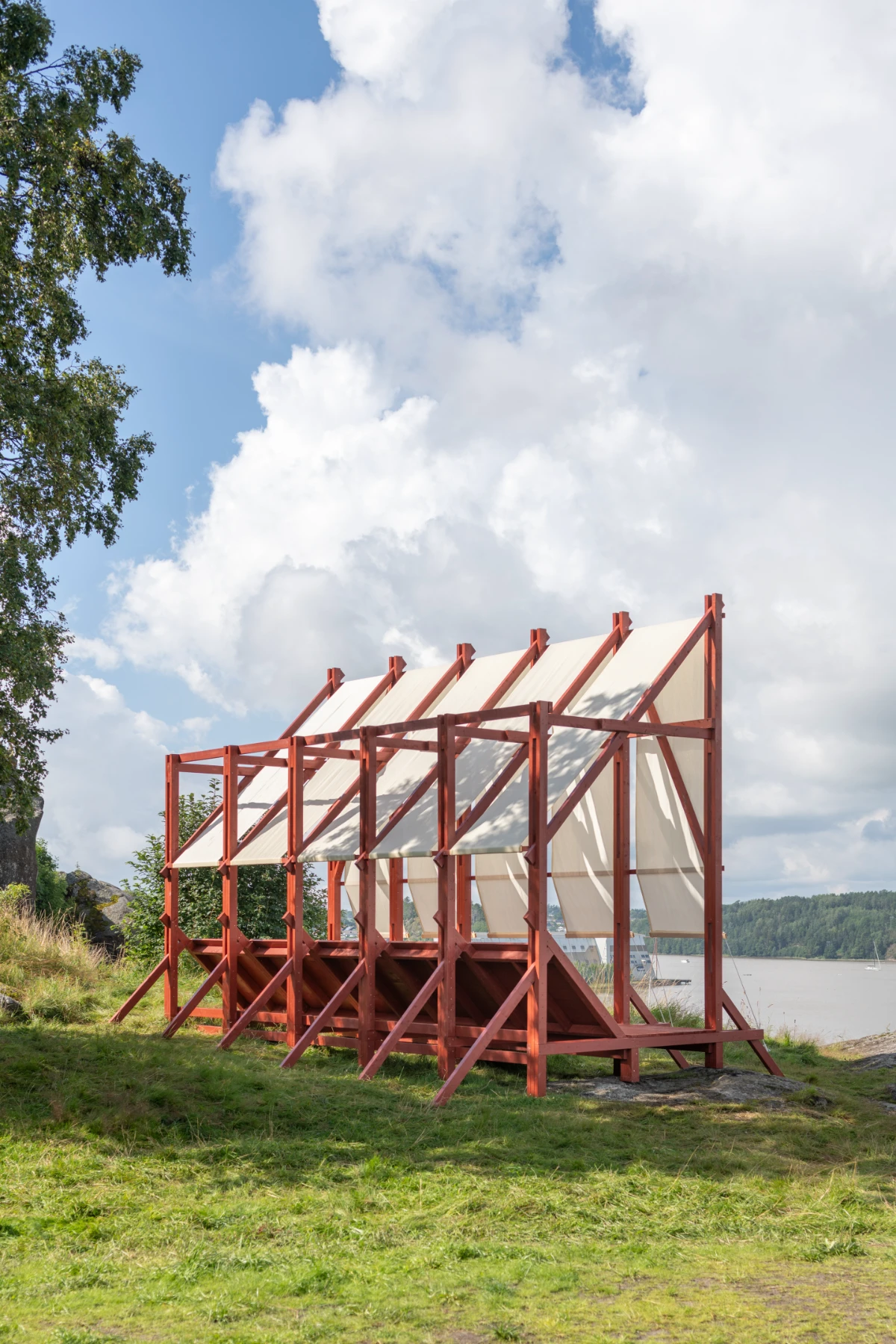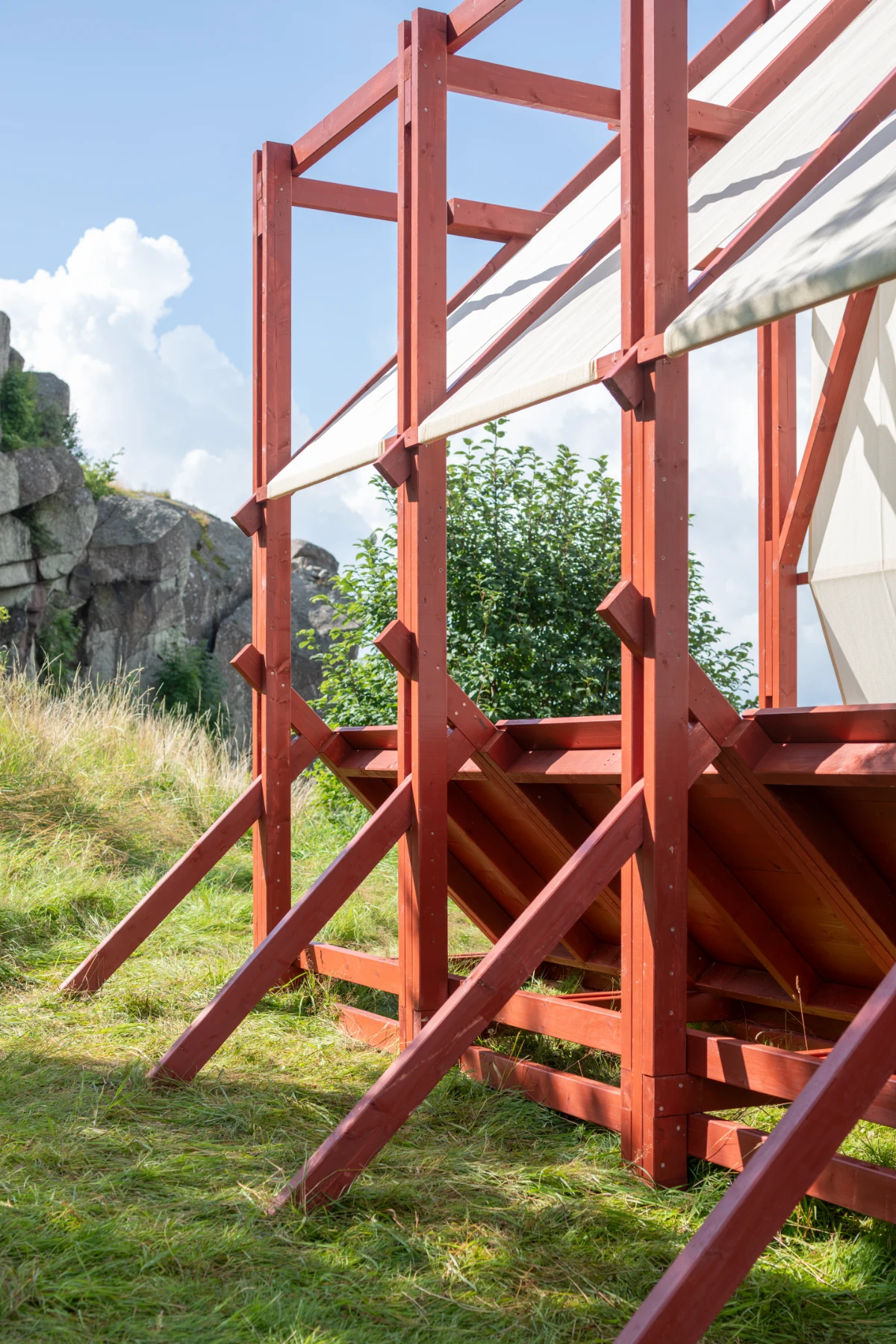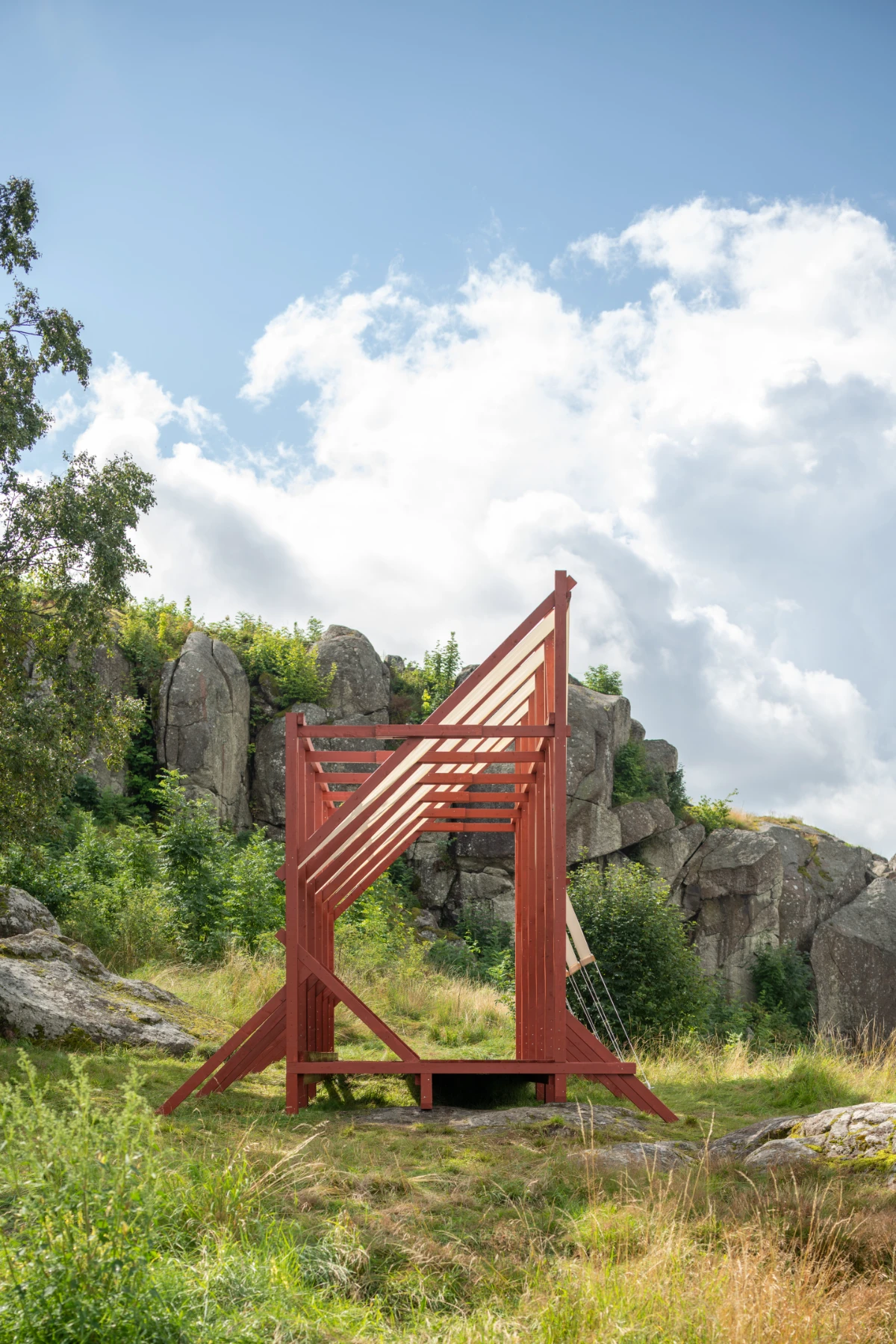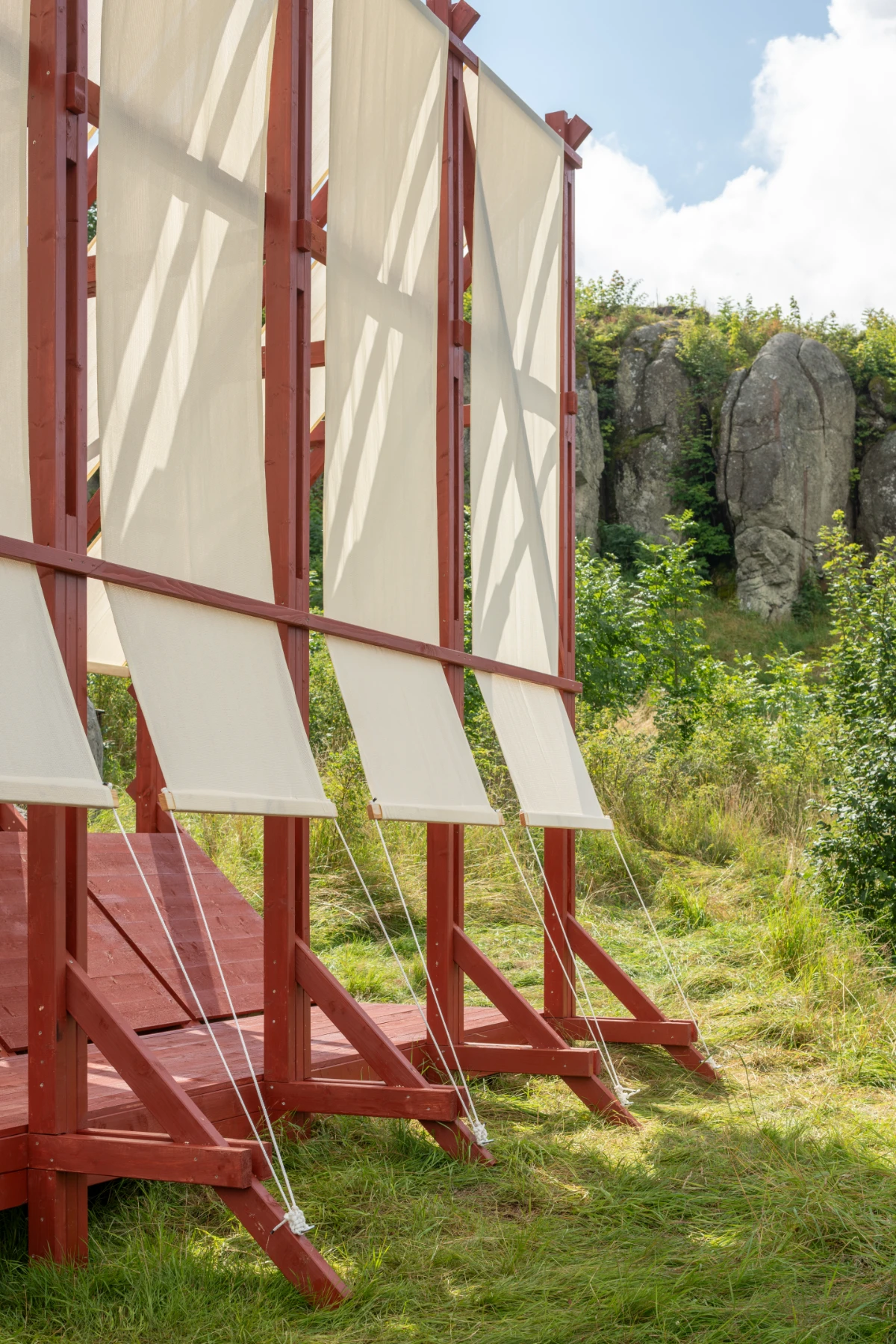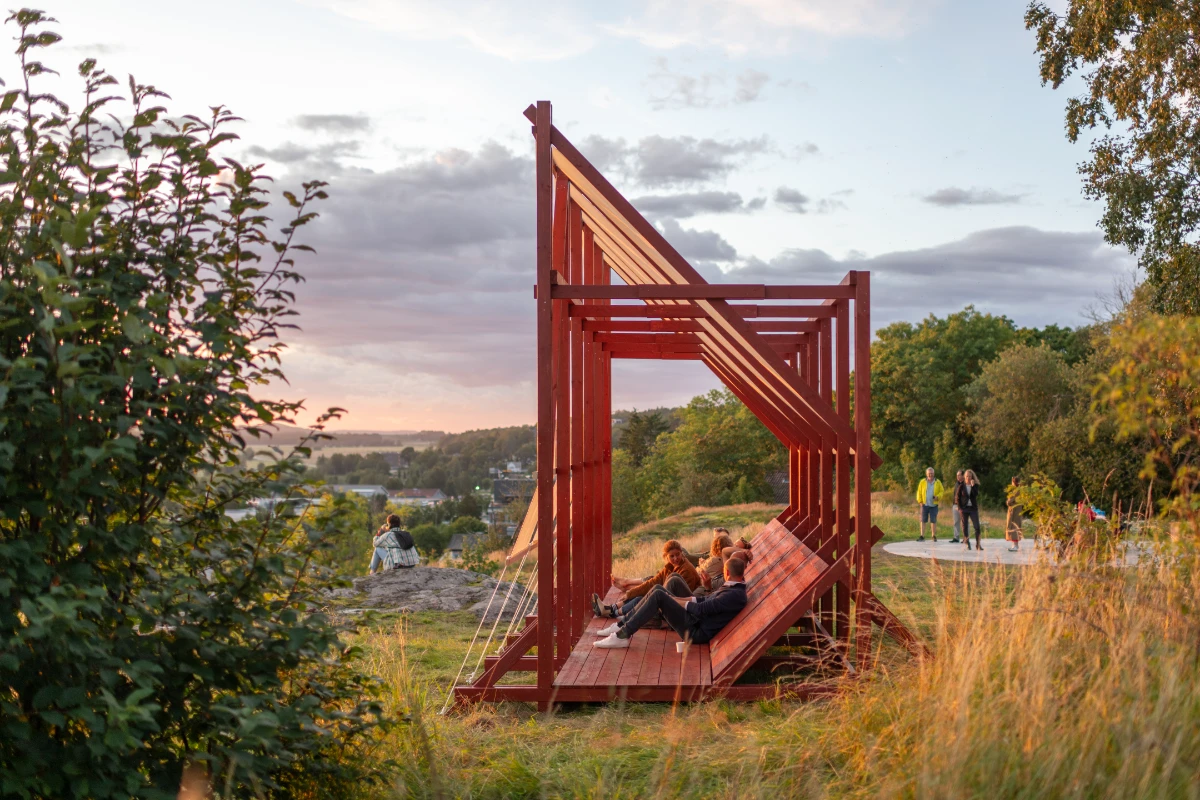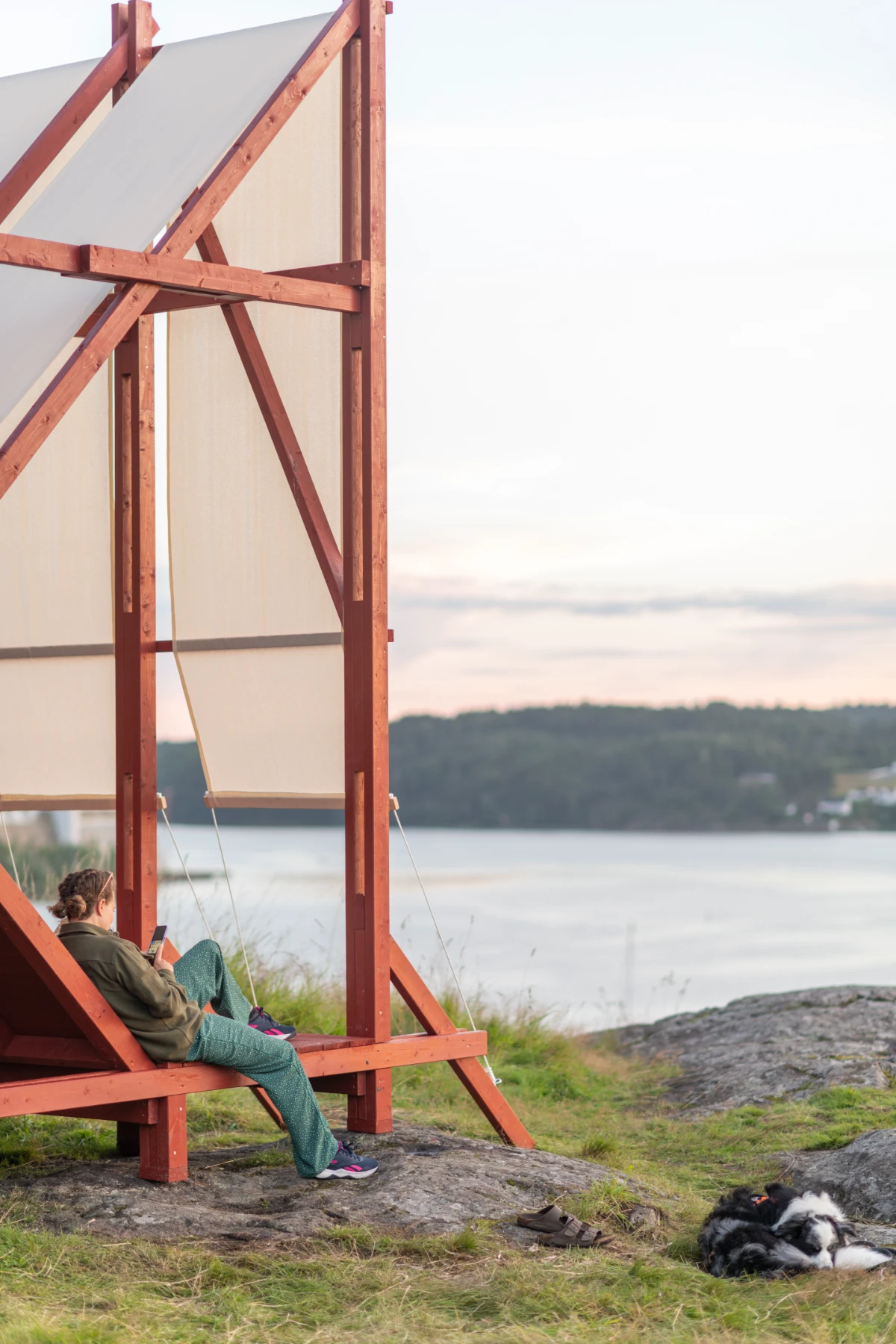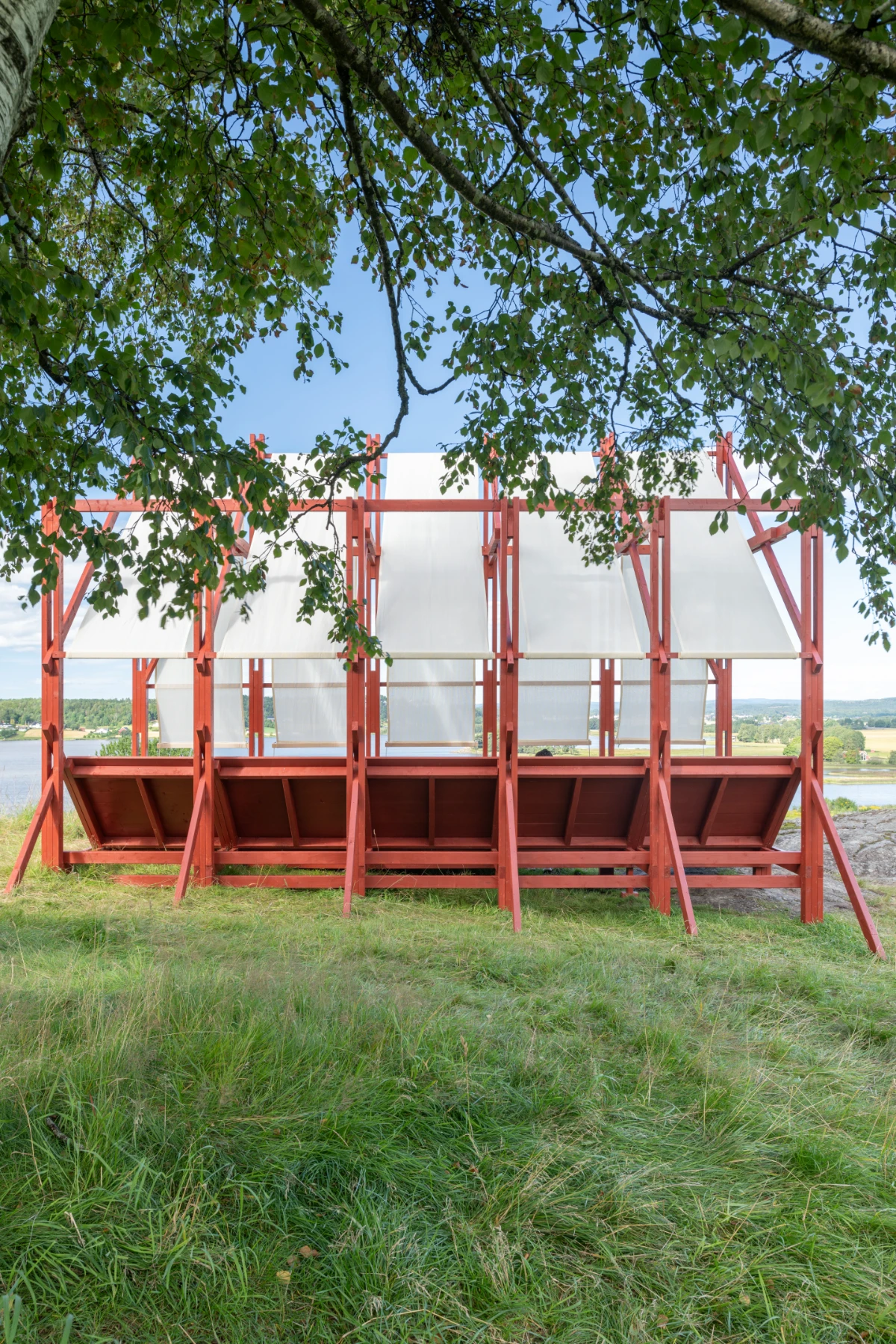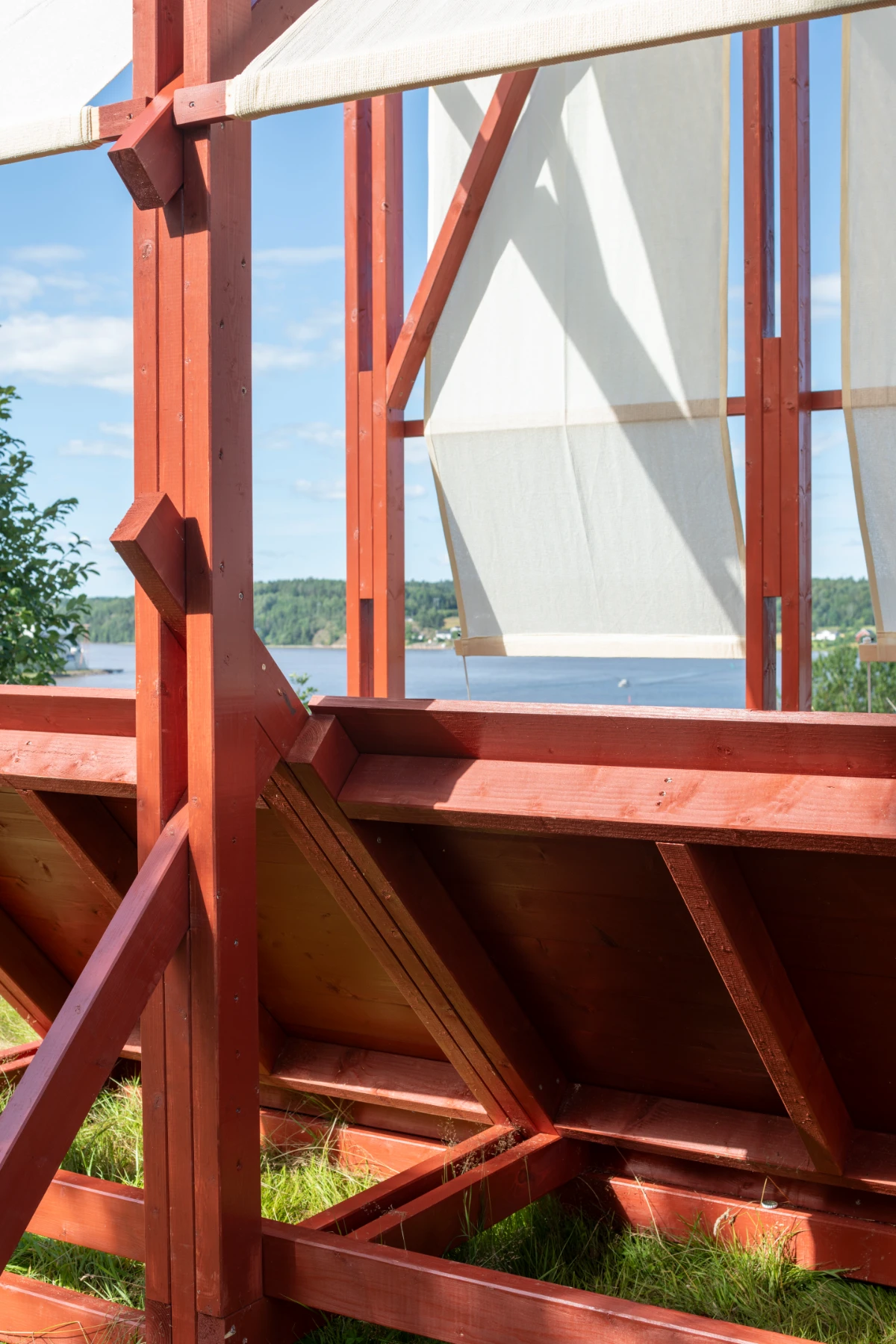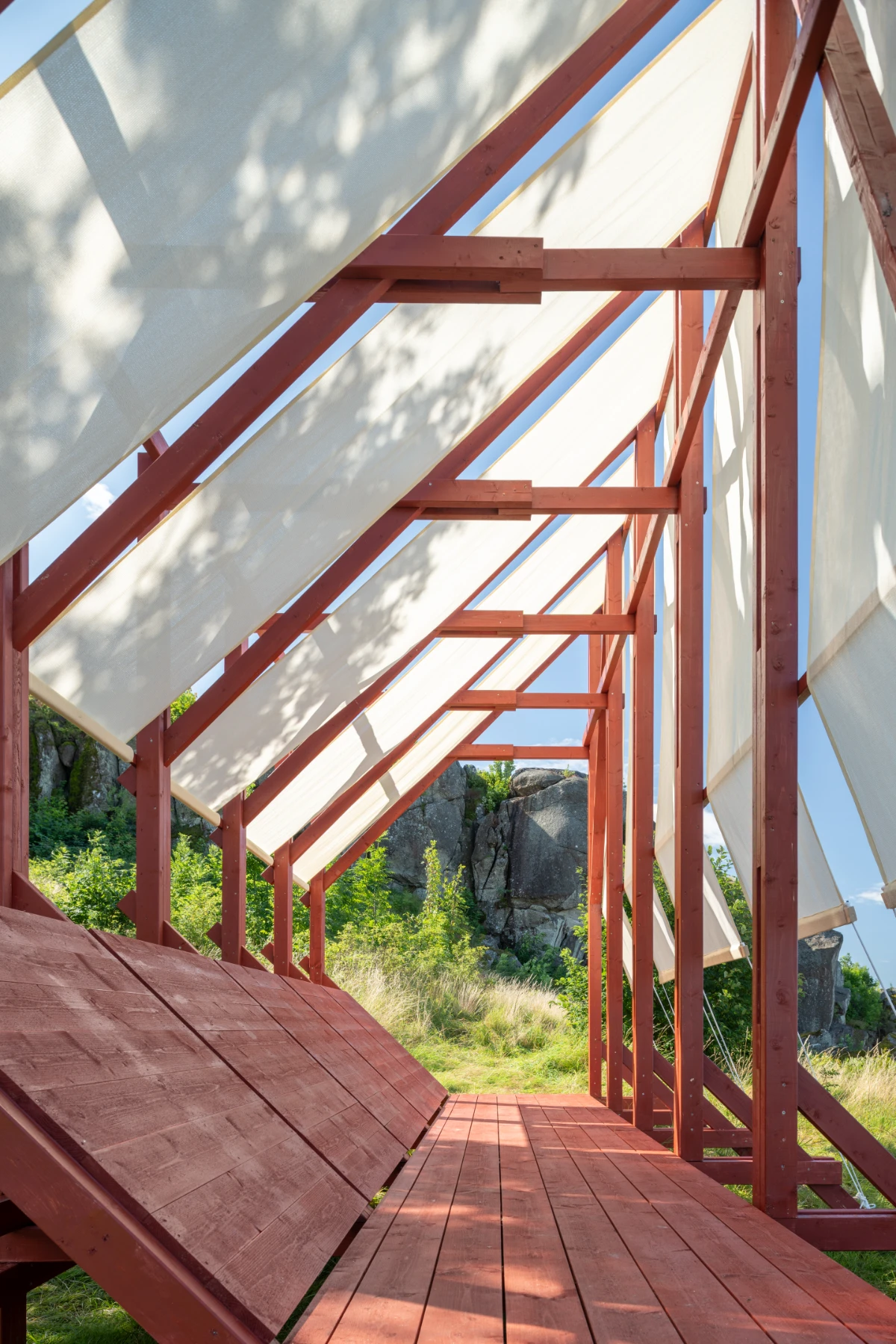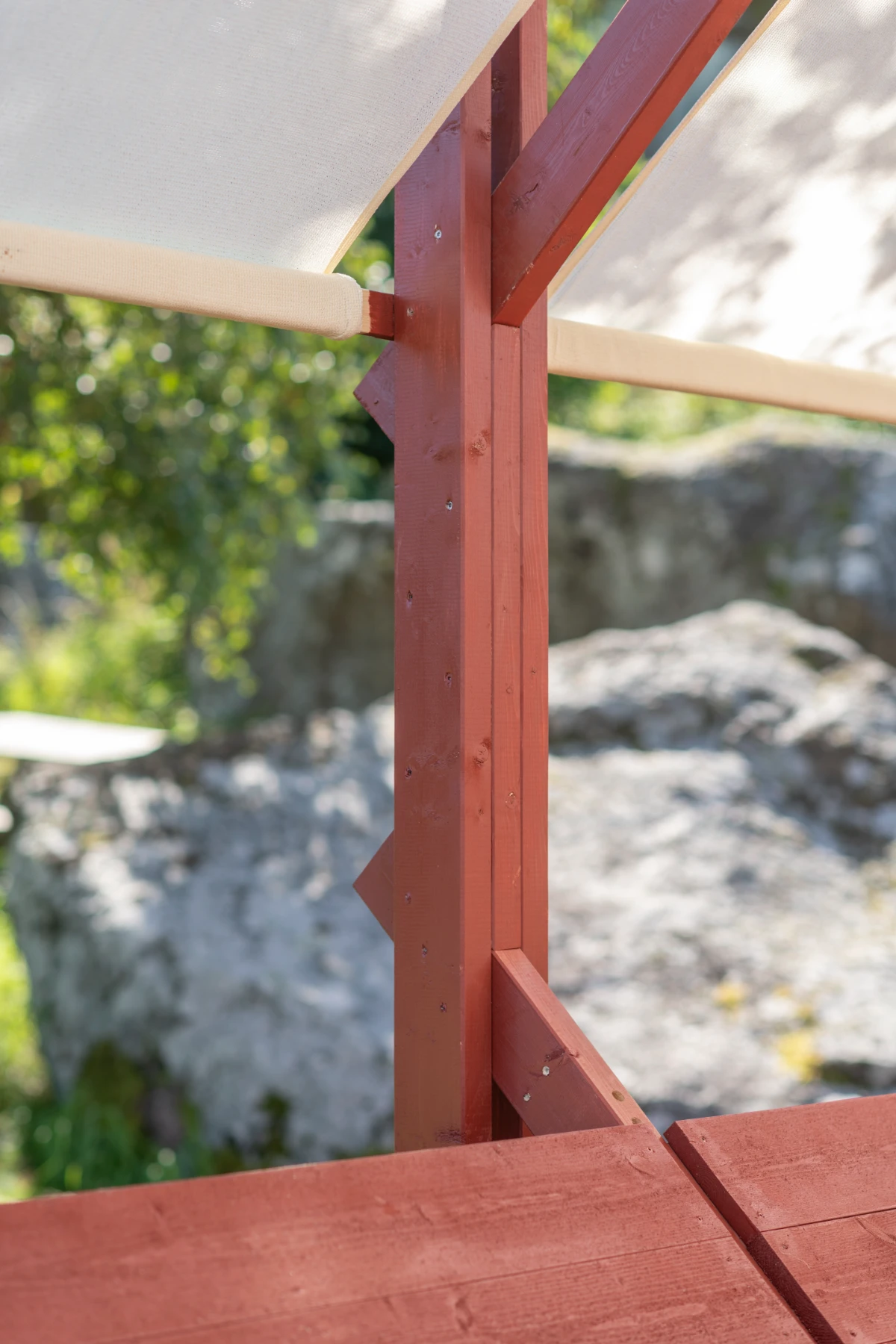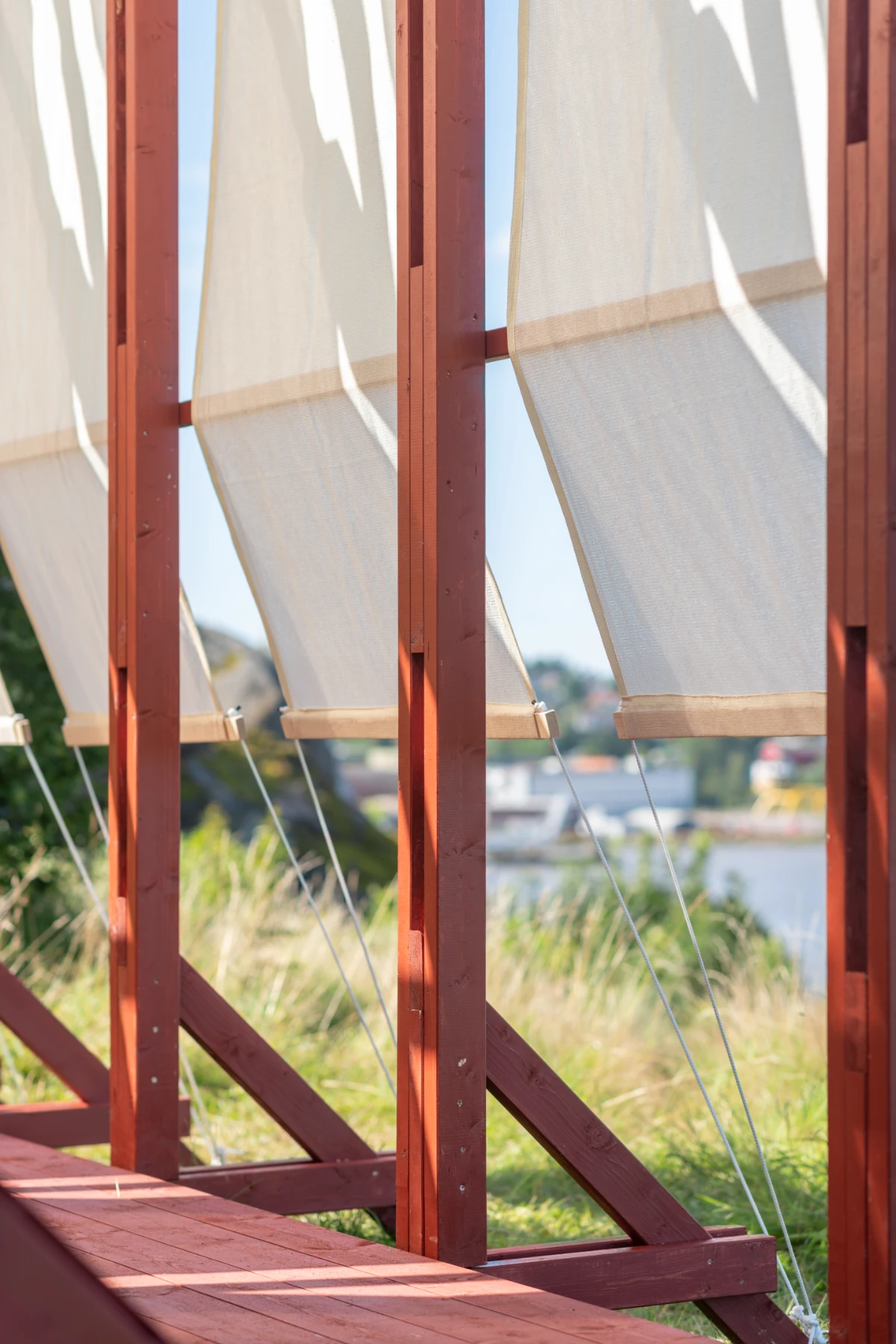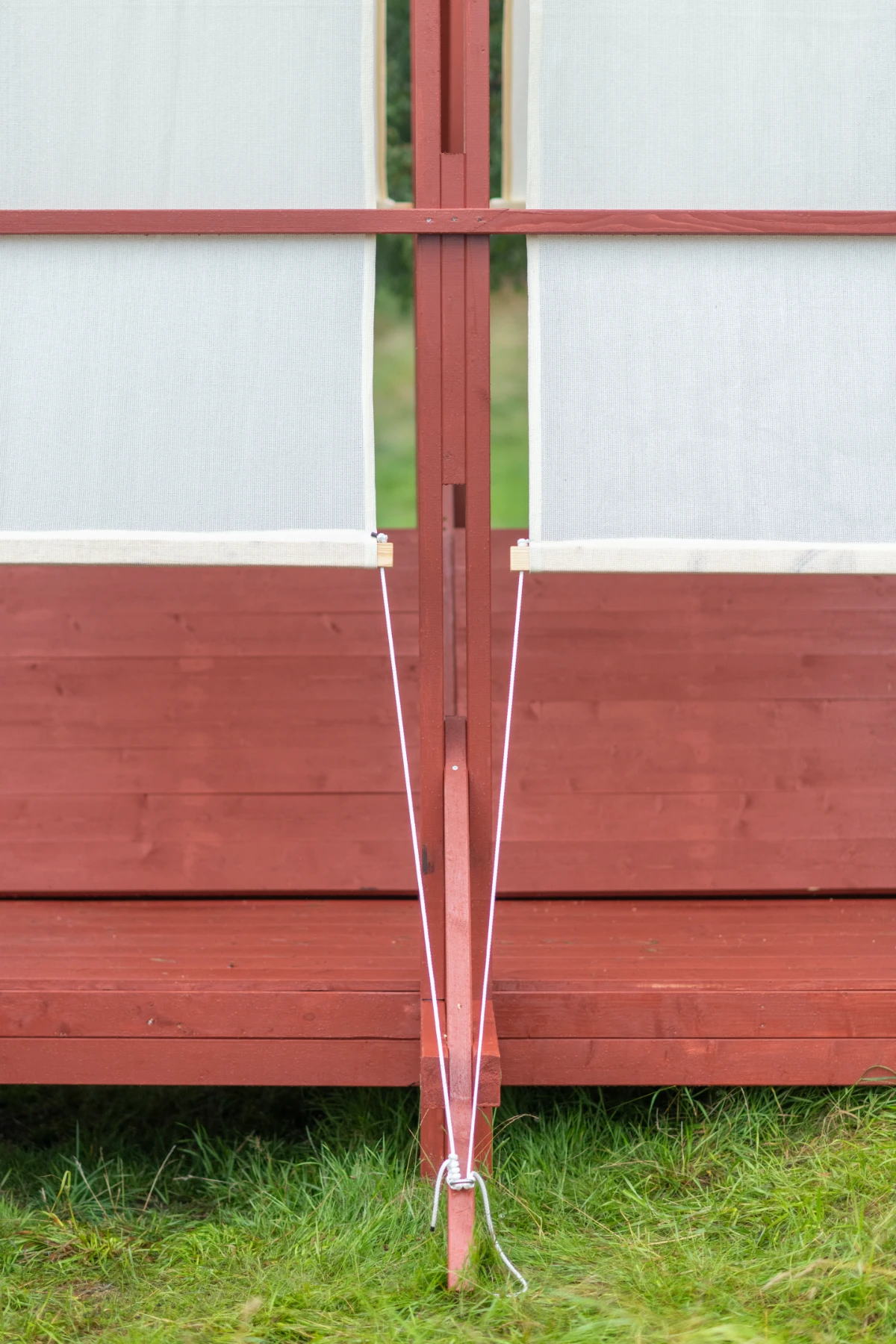Vessel is a temporary architecture installation located on the historical site Slottsfjellet, in the center of Tønsberg, south of Oslo, in Norway. It stands between July 27th and August 10th as part of the Færderbiennalen’s programme, and has been given an extended stay on site until early October, on popular demand. This installation, built of wood and agricultural fabric, references vessels that have been built for centuries—vessels that have been the means for human beings to explore and expand beyond the horizon and also transmit hand crafts knowledge through generations and between peoples.
The asymmetrical “Vessel,” laying on the rocks, invites visitors to experience their proximity to nature and the horizon as perceived from a terrestrial perspective: the partially fixed fabrics on the timber frame structure makes one aware of the sound and intensity of the wind shifts, and framed views reestablish the relation between human made artifacts and the landscape, while, in moments of calm it is possible to lay down or sit recalling the contemplative and existential feelings that can be experienced in nature.
The location proposed by Faerderbiennalen is on the grounds of the Slottsfjelletmuseet (The city’s Historical Heritage Museum). The site is protected and there’s the possibility of Viking archeologic remnants all over the ground. Thus, it became a condition to make the structure simply stand without foundations and avoid all possibilities of piercing the soil. Also, in response to the irregular topography of the terrain, the proposal aims to state its ephemeral and precarious condition through a constructive system, which allows for adaptation to the terrain without the use of foundations.
The metaphorical vessel, in constant movement due to the billowing fabrics, and built with a sequence of repetitive, rational stations (frames,) and ‘sails,’ pretends, despite its non-permanent condition, to establish lasting memories stimulating the senses of the visitors.

